
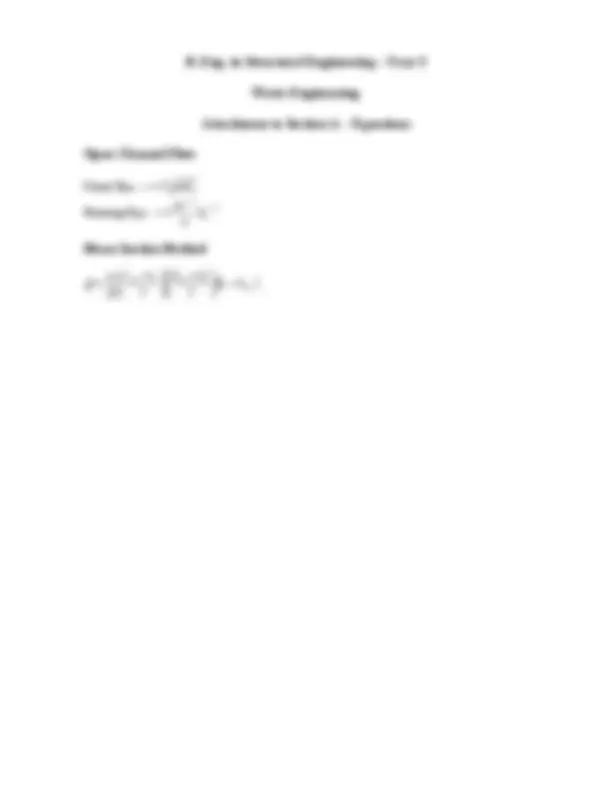
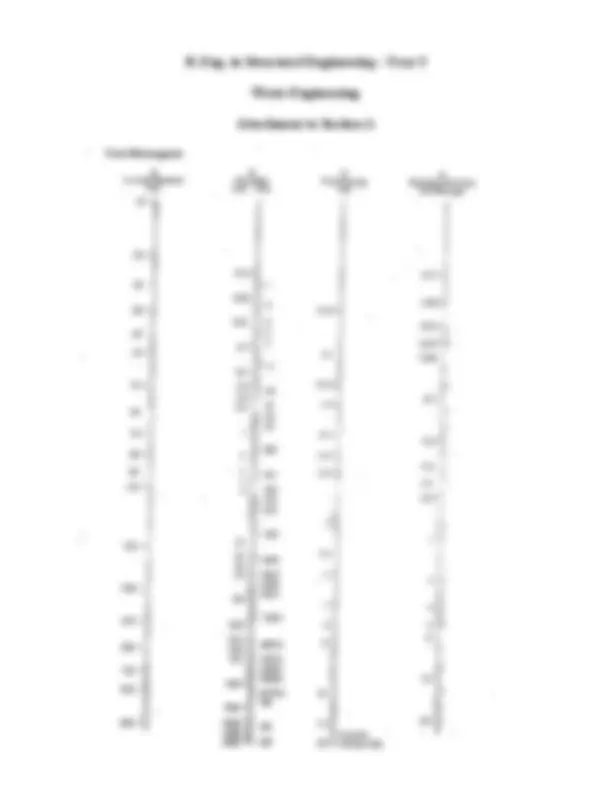
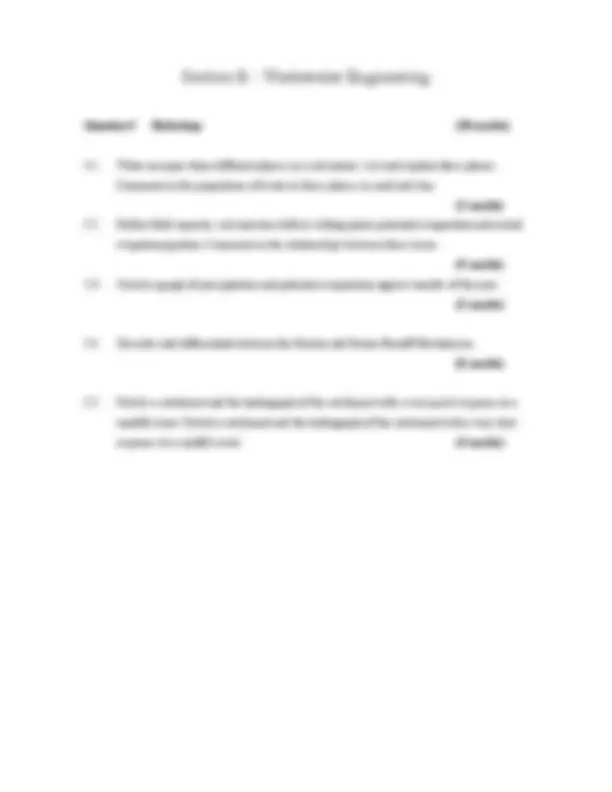
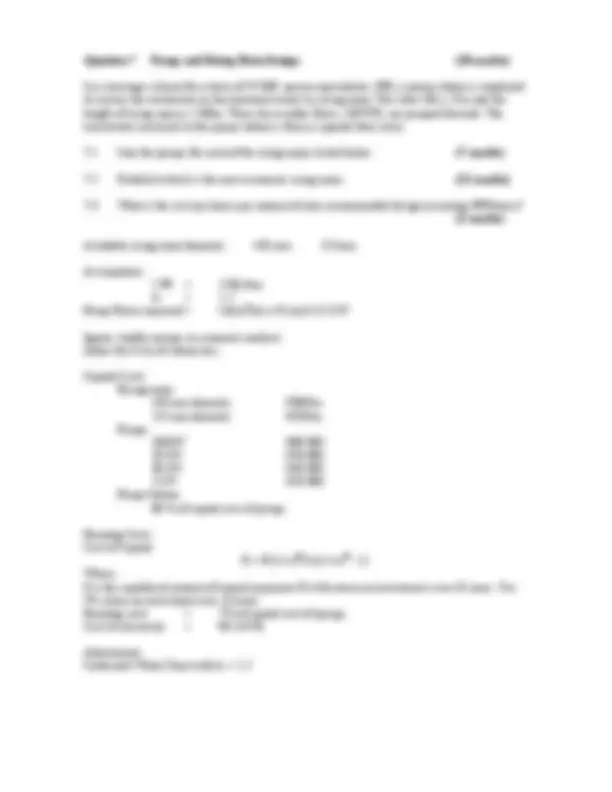
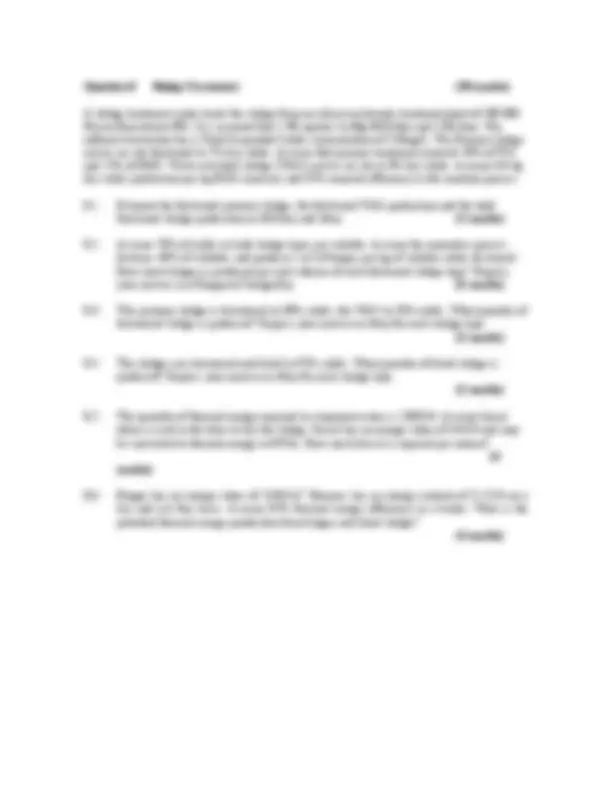
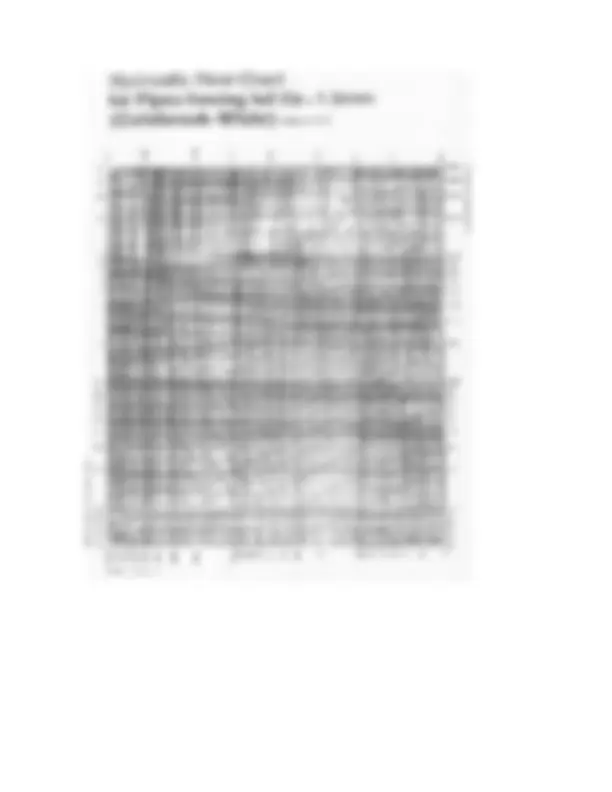


Study with the several resources on Docsity

Earn points by helping other students or get them with a premium plan


Prepare for your exams
Study with the several resources on Docsity

Earn points to download
Earn points by helping other students or get them with a premium plan
Community
Ask the community for help and clear up your study doubts
Discover the best universities in your country according to Docsity users
Free resources
Download our free guides on studying techniques, anxiety management strategies, and thesis advice from Docsity tutors
Main points of this past exam are: Hydraulic Jump, Specific Energy of Flow, Manning Coefficient, Flow Classification, Hydraulic Jump, Phenomenon of River Flooding, Mean Section Method, Discuss River Pollution, Screening
Typology: Exams
1 / 10

This page cannot be seen from the preview
Don't miss anything!







(NFQ Level 8)
Answer five questions in total, a minimum of Examiners: Dr. J. Harrington two questions from each Section^ Dr. J.D. Murphy Use separate answer books for each section Prof. P. O’ Donoghue Programmable calculators are not permitted Mr. T. Corcoran All questions carry equal marks Attachments including figures and equations
Note: Attachment with equations
Q1. (a) A channel with a trapezoidal x-sectional shape is carrying water. It is 4m wide at the
base with side slopes of 2 horizontal to 1 vertical. The depth of water is 2.0m.
Calculate the volume of water passing per second (Q 1 ) when the depth of water is
2.0m and the bed slope of the channel is 1 in 350. Take the Manning Coefficient n as
0.025. Determine the specific energy of the flow and the flow classification.
(10 marks) What would be the depth of water in the channel to pass twice this volume per second
(Q 2 ) if both the slope and the value of n were unaltered? (4 marks)
(b) Water enters a rectangular channel of width 0.3m with a bed slope of 1 in 100 (Chezy Coefficient C = 56) with a depth of 0.15m. Determine the velocity of flow and the
flow classification. Under what conditions will a hydraulic jump be formed
downstream of this entry section to the channel? What will happen the specific energy
if a hydraulic jump is formed? (6 marks)
Q2. (a) Discuss the phenomenon of river flooding in Ireland. (10 marks)
(b) Calculate the river flow rate using the Mean Section Method for the following data:
Distance (m) 5 10 20 30 35 40 45 47
Depth (m) 0.0 1.8 3.7 9 12.6 10.1 5.3 0.
Velocity (m/sec) 0.0 0.1 0.2 0.6 1.1 0.8 0.5 0.
(10 marks)
Q3. (a) Discuss River Pollution (5 marks)
(b) Discuss the water quality objective approach and the emission standard approach with regard to Water Quality Standards. Give examples. (5 marks)
(c) Determine the minimum capacity of a storage reservoir required to maintain a
constant water supply for a population equivalent of 300,000 given the following
monthly mean inflow values (in m^3 /month):
Month 1 2 3 4 5 6 7 8 9 10 11 12
Inflow
(x10 6 )
Check your answer using an alternative approach. (10 marks)
Q4. (a) Discuss Water Treatment under the following headings:
(i) Raw Water Storage (4 marks)
(ii) Screening (3 marks)
(iii) Chemical Pre-Treatment (3 marks)
(b) A water supply scheme is required for an area which includes a 3 teacher, 80 pupil national school, an estimated eventual maximum number of houses of 25 and a single
large dairy farm with 100 dairy cows and up to 25 calves. Take dairy cow water
demand as 150 l/head/day, calf water demand as 22 l/head/day and 50 l/day per pupil
and staff.
The water supply takes water from a nearby river, which can supply the community
all year round. The lowest estimated water level in the river is +7m O.D., the highest
is +9.5m O.D.
A pump is required for supply and must provide the required flow at a minimum
pressure head of 10m. Determine the pump requirements given information on two
points within the area to be supplied:
Point A (an intermediate point within the supply scheme) Distance from Supply Point: 2100m, Discharge Elevation: +19m O.D.
Point B (the furthest point within the supply scheme) Distance from Supply Point: 2650m, Discharge Elevation: +18m O.D.
Use the attached flow nomogram for a polyethylene pipe. (10 marks)
Question 5 Hydrology (20 marks)
5.1. Water occupies three different phases in a soil matrix. List and explain these phases.
Comment on the proportions of water in these phases in sand and clay.
(3 marks)
5.2. Define field capacity, soil moisture deficit, wilting point, potential evaporation and actual
evapotranspiration. Comment on the relationships between these terms.
(5 marks)
5.3. Sketch a graph of precipitation and potential evaporation against months of the year.
(2 marks)
5.4. Describe and differentiate between the Horton and Dunne Runoff Mechanisms.
(6 marks)
5.5. Sketch a catchment and the hydrograph of the catchment with a very quick response to a
rainfall event. Sketch a catchment and the hydrograph of the catchment with a very slow
response to a rainfall event. (4 marks)
Question 7 Pump and Rising Main Design (20 marks)
In a sewerage scheme for a town of 35 000 person equivalents, (PE), a pump station is employed to convey the wastewater to the treatment works by rising main. The static lift is 25m and the length of rising main is 1500m. Three dry weather flows, (3DWF), are pumped forward. The wastewater conveyed to the pump station is from a separate foul sewer.
7.1 Size the pumps for each of the rising mains listed below. (7 marks)
7.2 Establish which is the most economic rising main. (11 marks)
7.3 What is the cost per house per annum of your recommended design assuming 3PE/house? (2 marks)
Available rising main diameter: 450 mm 525mm
Assumptions: 1 PE = 220L/day ks = 1. Pump Power required = {Q(m^3 /hr) x H (m)}/125 kW
Ignore standby pumps in economic analysis. Allow for 0.5m of station loss.
Capital Costs: Rising main 450 mm diameter €300/m 525 mm diameter €350/m Pumps 100kW €80 000 50 kW €50 000 30 kW €40 000 5 kW €10 000 Pump Station 80 % of capital cost of pumps
Running Costs: Cost of Capital R = P{(1+r) Nr}/{(1+r) N^ - 1} Where, P is the capitalised amount of annual payments R with return on investment r over N years. Use 5% return on investment over 10 years Running costs = 7% of capital cost of pumps. Cost of electricity = €0.1/kWh
Attachments: Colebrook White Chart with ks = 1.